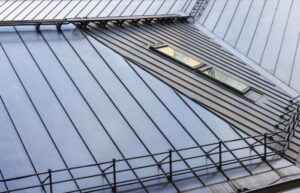
Metal roof decking is an essential component in commercial construction, providing structural support and enhancing the overall durability of a building. Understanding the basics of metal roof decking is crucial for architects, contractors, and building owners who seek to optimize their project’s performance. This article will delve into the importance, key features, types, benefits, installation process, and maintenance of metal roof decking.
Understanding the Basics of Metal Roof Decking
The Importance of Metal Roof Decking in Commercial Construction
In commercial construction, metal roof decking plays a vital role in providing a stable and secure foundation for the roof. It acts as a structural platform, acting as a support for the roofing materials and transferring the weight of the roof to the building’s underlying structure. Metal roof decking also helps to distribute the load evenly, reducing the risk of structural failure and supporting heavy loads such as equipment installations or snow accumulation.
Moreover, metal roof decking enhances the overall structural integrity of a building, contributing to its longevity and resilience. By serving as a protective layer between the roof membrane and the structural components of the building, metal roof decking helps prevent water infiltration and protects against corrosion, ultimately extending the lifespan of the roof and the entire structure.
Key Features of Metal Roof Decking
Metal roof decking offers several key features that make it a popular choice in commercial construction projects. Firstly, it provides exceptional strength and durability, with the ability to withstand extreme weather conditions, including high winds, heavy rain, and even hailstorms. Secondly, metal roof decking is fire-resistant, making it a safer option for commercial buildings. Additionally, it offers excellent thermal performance, contributing to energy efficiency and reducing heating and cooling costs. Finally, metal roof decking is lightweight, making it easier and more cost-effective to transport, handle, and install.
Furthermore, metal roof decking is available in a variety of profiles and configurations, allowing for versatility in design and application. Whether it’s used in new construction or roof replacement projects, metal roof decking can be customized to meet specific structural requirements and aesthetic preferences. Its compatibility with different roofing systems and insulation materials makes it a versatile choice for architects and contractors seeking flexibility and performance in their projects.
Types of Commercial Metal Roof Decking
Steel Decking
Steel decking is one of the most common types of metal roof decking used in commercial construction. It is known for its strength, durability, and versatility. Steel decking is typically available in various profiles and gauges, allowing for customization based on project requirements. It is also compatible with a wide range of roofing materials, making it a flexible option for diverse architectural designs.
Steel decking is often chosen for its fire resistance properties, offering an added layer of protection to the building structure. Additionally, steel decking can be manufactured from recycled materials, aligning with sustainable construction practices and environmental considerations. The material’s high strength-to-weight ratio makes it a cost-effective choice for projects where structural efficiency is a priority.
Aluminum Decking
Aluminum decking is another popular choice for commercial metal roof applications. It offers excellent corrosion resistance, making it a suitable option for coastal or highly humid environments. Aluminum decking is lightweight, making it easier to install and reducing the load on the building’s structure. It also provides good thermal conductivity, contributing to energy efficiency.
Aside from its functional benefits, aluminum decking is favored for its aesthetic appeal and modern look. The material can be easily shaped and formed, allowing for creative architectural designs and unique roof configurations. Aluminum decking is also recyclable, promoting sustainability and eco-friendly building practices in the construction industry. Its long lifespan and low maintenance requirements make it a practical choice for commercial buildings seeking durability and visual appeal.
Benefits of Using Metal Roof Decking
Durability and Longevity
Metal roof decking is renowned for its durability and longevity. Unlike traditional roofing materials, metal decking can withstand harsh weather conditions, resist rotting, and is less prone to damage from pests. Its long lifespan means reduced maintenance and replacement costs over time, making it a cost-effective choice for commercial buildings.
Furthermore, metal roof decking is highly resistant to corrosion, ensuring that it maintains its structural integrity even in coastal or industrial environments where exposure to salt or chemicals may be a concern. This resistance to corrosion adds another layer of durability to metal roof decking, making it a reliable choice for long-term use.
Fire Resistance
Fire safety is of utmost importance in commercial buildings, and metal roof decking provides an added layer of protection. Metal decking materials are non-combustible and can help prevent the spread of fire. This can buy occupants valuable time to evacuate the building and allow firefighters to control the blaze more effectively.
Energy Efficiency
Energy efficiency is a crucial consideration in modern commercial construction. Metal roof decking contributes to energy efficiency by providing thermal insulation, reducing heat gain in summer and heat loss in winter. This not only improves occupant comfort but also helps reduce the reliance on heating, ventilation, and air conditioning systems, leading to significant energy savings. Additionally, the reflective properties of certain metal roofing materials can help reduce the urban heat island effect.
Moreover, metal roof decking can be designed to accommodate solar panels, further enhancing the energy efficiency of a building. By harnessing solar power through integrated photovoltaic systems, commercial buildings can reduce their reliance on traditional energy sources, lower utility costs, and decrease their carbon footprint. This sustainable approach aligns with green building practices and can contribute to LEED certification for environmentally conscious projects.
Installation Process of Metal Roof Decking
Pre-installation Considerations
Prior to installing metal roof decking, it is essential to conduct a thorough assessment of the building’s structural requirements and determine the appropriate decking type and specifications. Consultation with structural engineers and adherence to building codes and regulations is crucial to ensure the decking can support the expected loads and meet safety standards.
Step-by-step Installation Guide
The installation of metal roof decking involves several steps. First, the structural support system, including steel beams or joists, must be in place. Then, the metal decking panels are positioned and aligned correctly, secured to the structural supports with appropriate fasteners. It is important to ensure proper spacing and alignment of the panels to ensure structural integrity. Finally, flashings, insulation, and roofing materials are installed over the metal decking to complete the roofing system.
Maintenance and Care for Metal Roof Decking
Regular Inspection and Cleaning
Regular inspections are essential to identify any signs of damage, corrosion, or wear and tear on the metal roof decking. Cleaning the surface of the decking to remove dirt, debris, or any substances that may cause corrosion is recommended. It is also crucial to inspect and maintain any sealants, flashings, or roofing materials to prevent water infiltration.
Dealing with Rust and Corrosion
If rust or corrosion is detected on metal roof decking, prompt action should be taken to prevent further damage. Treating affected areas with appropriate rust inhibitors and applying protective coatings can help inhibit the progress of corrosion. It is important to consult with professionals to ensure the correct treatment methods are followed.
Investing in high-quality metal roof decking and following proper installation and maintenance practices are essential for maximizing the lifespan and performance of commercial roofs. By understanding the basics, types, benefits, installation process, and maintenance requirements of metal roof decking, professionals involved in commercial construction can make informed decisions and ensure the success of their projects.
Ready to ensure your commercial property is equipped with a roof that offers superior protection and longevity? Look no further than Commercial Roofing Rana, your trusted partner for top-tier commercial roofing services in the Mid-South. With our Duro-Last roofing systems, designed to fit your roof perfectly, we’ve been safeguarding businesses like yours against costly water damage since 1983. From industrial buildings to shopping centers, our licensed team is dedicated to delivering exceptional quality without cutting corners. Don’t wait for the next rainstorm to test your defenses. Schedule Now! and let Commercial Roofing Rana fortify your building with our proven roofing solutions.
